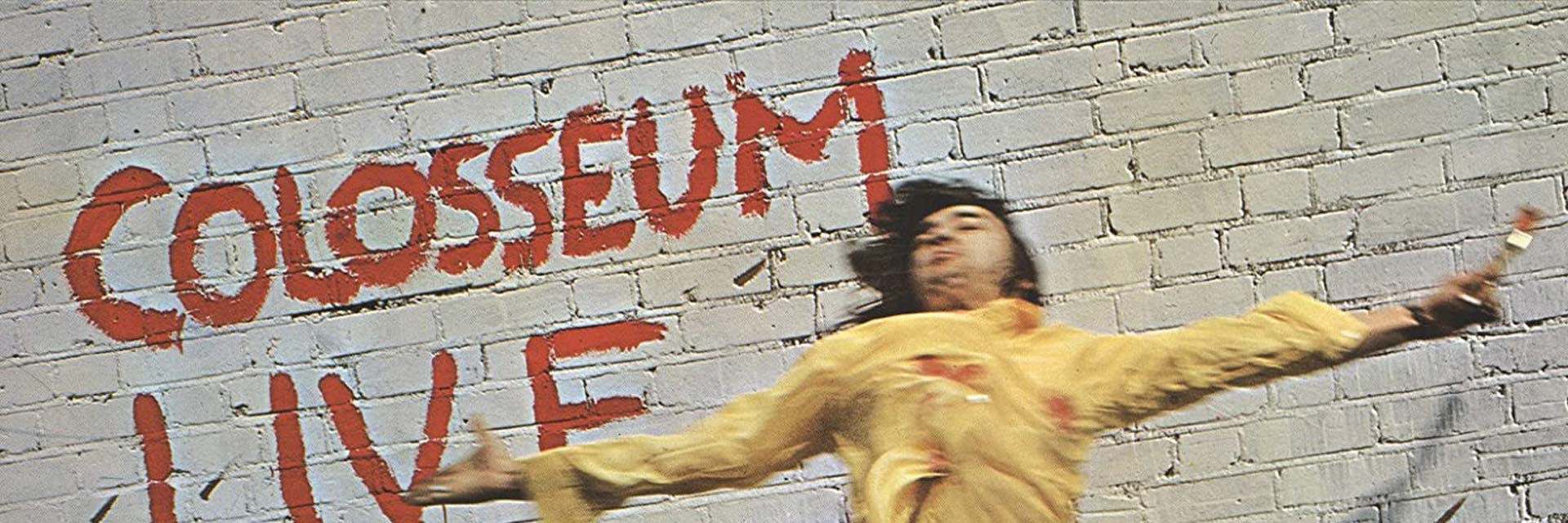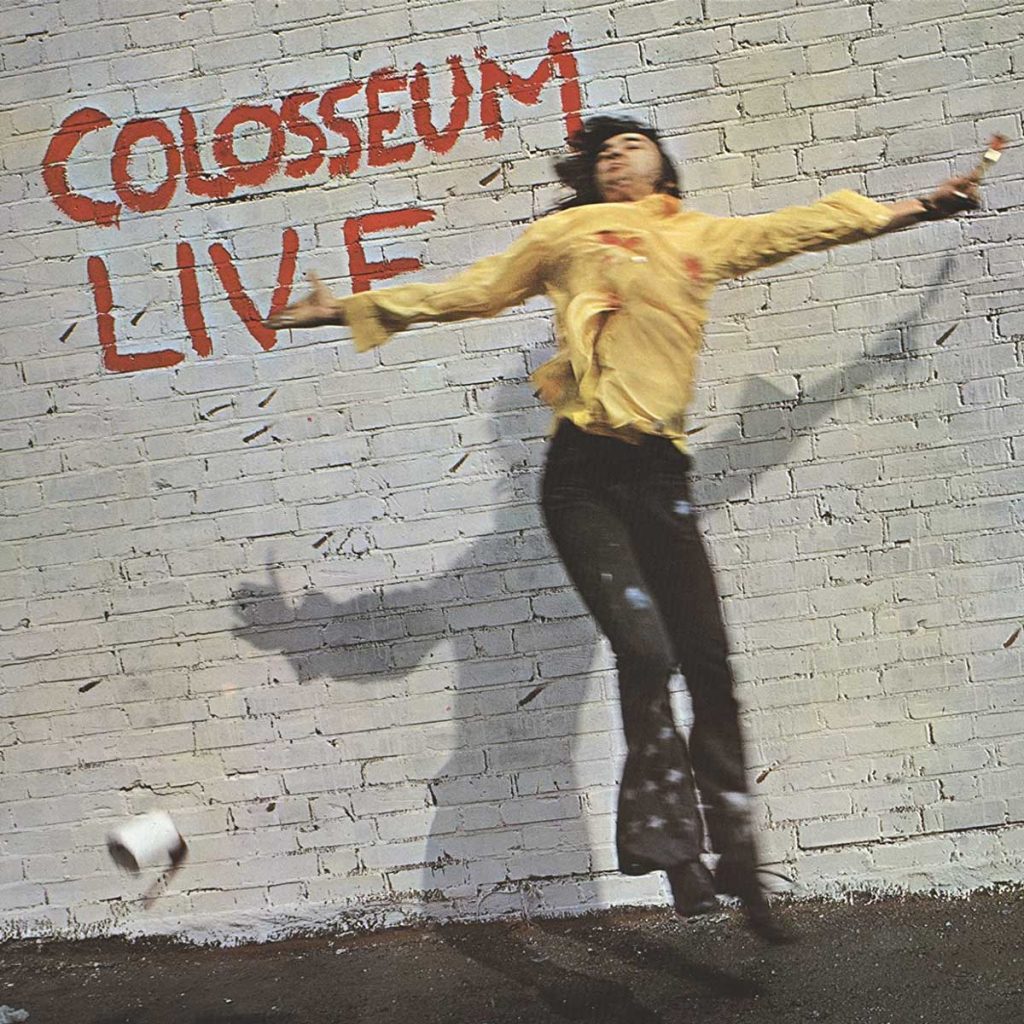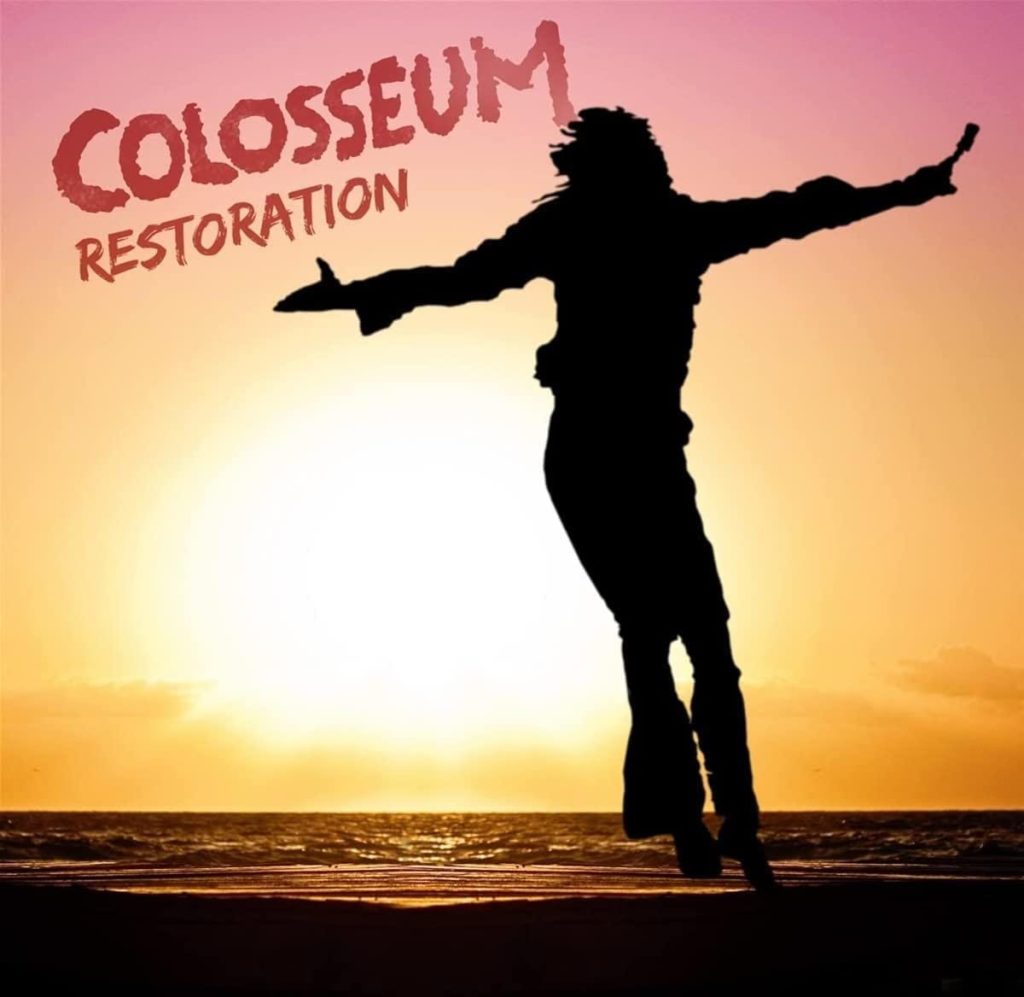Covering normally refers to songs being performed by other artists, but actual album covers attract their share of impersonators, too. The covered cover: Is it a witty reference, respectful homage or parody? Or is there a deeper meaning behind it?
This album was due. After three studio records, all of which reached the Top 25 in the United Kingdom, Colosseum was now expected to make a crisp live record. This rock-jazz-blues band was famous for its concert performances – improvisation played a particularly important role. Bandleader Jon Hiseman was considered a master of drum solos, Dick Heckstall-Smith a saxophonist with great jazz qualities, singer Chris Farlowe an outspoken stage animal. Dave Greenslade (organ) and Clem Clempson (guitar) were also great soloists. In addition, the Who album Live At Leeds had just proved that a good concert album that defied convention could storm the charts. So it was decided to record some live concerts in the spring of 1971.
After the first recording (in Manchester), the band was initially dissatisfied with itself. But this was mainly due to the fact that the program was practically new and the experience of playing it was still unfamiliar. At any rate, no dissatisfaction was felt among the audience. Later, the musicians of Colosseum decided that this very concert would make up the bulk of the album. It became a double LP with six tracks averaging over eleven minutes in length. Except for “Walking In The Park,” the opener of their debut album, none of the tracks had been heard before on any of the UK studio albums. Two songs – “Rope Ladder To The Moon” and “Lost Angeles” – had at least made it onto the US album The Grass Is Greener in short studio versions. In the live version, however, they had now grown to about three times their original length and possessed a completely new, unleashed character.
The double LP Live was released in June 1971 and was a huge success, doing even better in the charts than the band’s previous studio album. This grandiose concert document seemed to open wide the door to Colosseum’s further career. As early as August, Jon Hiseman put together a special collection of Colosseum’s studio recordings that had been left over in order to keep the band’s enthusiasm alive. But then, in a complete surprise, everything toppled. Farlowe and Clempson, two of the “new” members in the band, seemed to want to leave. And the “old” members suddenly felt exhausted after three years of almost continuous touring. In November 1971, at the height of their popularity, Jon Hiseman announced the end of the band Colosseum. The special collection (The Collectors Colosseum) became a follow-up and obituary.
To this day, Colosseum’s double LP is a diamond of rock history – one of the best, most independent, most explosive live albums of all genres. The sudden end of the band seemed somehow tragic in view of this album and increased even more the legendary status of the record. Even the idiosyncratic album cover became outright iconic – people were looking for symbolic, explanatory meanings in the jumping-up figure, the red lettering, the white wall. Keith MacMillan (artist name: Keef) had designed the album cover, a highly regarded cover designer at the time. The album cover for Colosseum’s Valentyne Suite had been his first work for the Vertigo label. He was also responsible for album covers for Beggars Opera, Black Sabbath, David Bowie, Manfred Mann, Rod Stewart – in total “more than 1000 covers”, as he claimed. Later, he produced music videos.
But there is no question: a band with the energy and originality of Colosseum never completely disappears. It remains in the memory, it leaves traces, it glows after. A few years later, bandleader Jon Hiseman founded Colosseum II, which at times was one of the best jazz rock bands in Europe. And 23 (!) years after the breakup of Colosseum, even the “classic” lineup from 1971 got back together and made several albums. Lastly, drummer Jon Hiseman was still with JCM, quasi the core rhythm trio of Colosseum – with Clem Clempson (guitar) and Mark Clarke (bass). Another JCM album was already in the planning stages when Jon Hiseman died in 2018. By then, the trio had just begun to expand to its old Colosseum strength. And because Clem Clempson understood Hiseman’s last will to mean that they should continue on this path, Colosseum was indeed reborn in 2020. Sadly, a Colosseum without “Mr. Colosseum.”
Clem Clempson, the guitarist, now holds the reins. “I’ve been wondering how much fun it is for me to play the old Colosseum songs again. And I love the saxophone. Sometimes I get tired of having to play a guitar solo in every song – so it’s nice to have another solo instrument. It takes a little bit of pressure off.” The new 2021 Colosseum lineup still includes three members of the 1971 band: Clempson, Farlowe and Clarke. For the cover of the album Restoration, of course, they went back to the record from 50 years ago – the iconic, grandiose, tragic live album and the image motif of the figure jumping up. Of course, it was Clem Clempson who gave the inspiration for the new cover. His guitar riffs and guitar solos are also by far the strongest thing on Restoration.
Colosseum: Live (rec. 1971, Bronze)
Colosseum: Restoration (rec. 2021, Repertoire Records)
Colosseum at Repertoire Records



